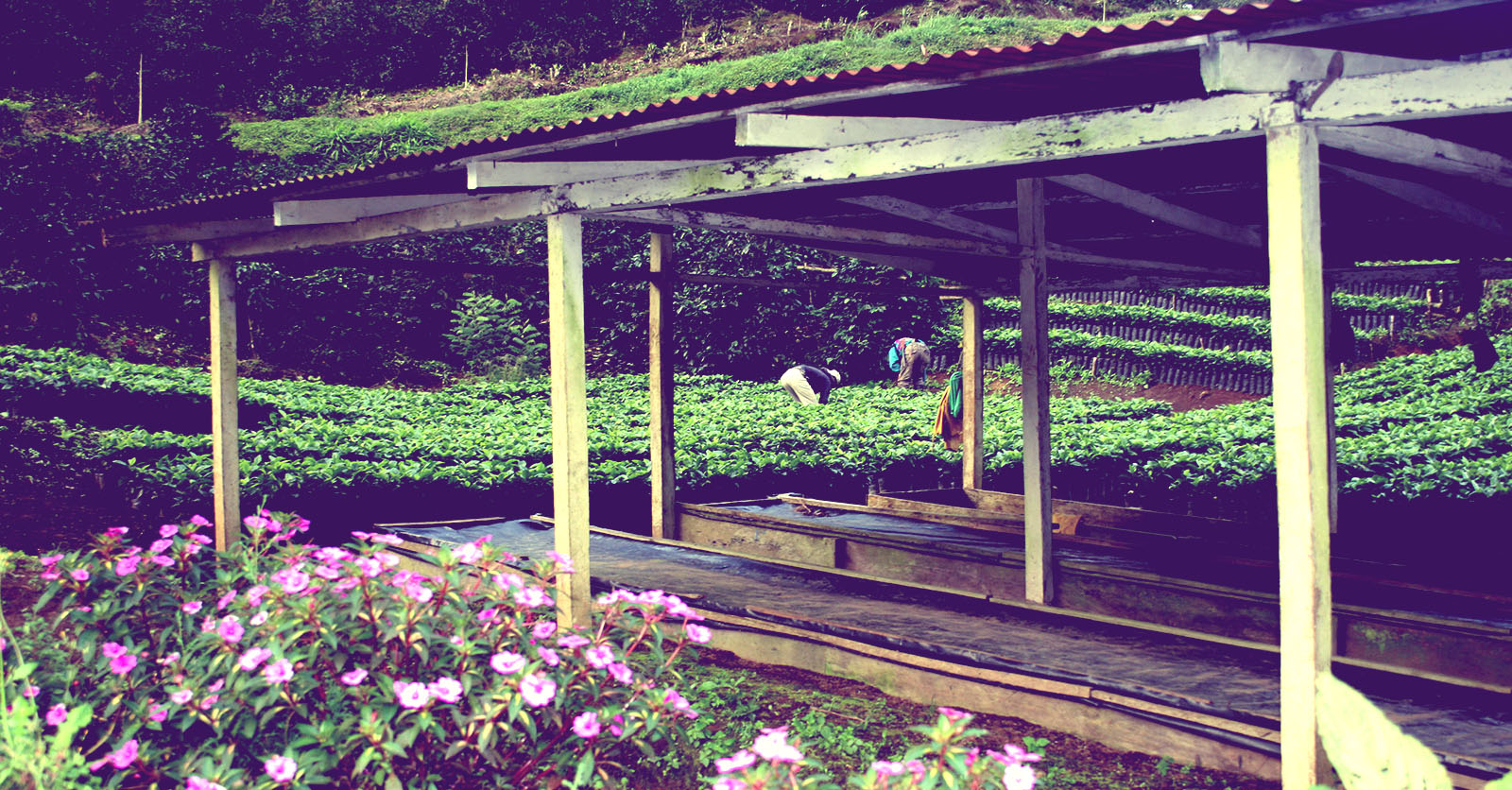– We believe that coffee production should be a simple process following a fairly basic set of guidelines and principles. However, this should not understate the enormous amount of time, effort, energy and human endeavour that goes into growing, harvesting and milling each and every bean.
The coffee year is subject to some variance as conditions are not identical year in year out but in general the focus during each part of the year is as follows:
March: Pruning & cleaning of mature fields; soil conservation
April: Pruning & cleaning of mature fields complete; areas for new planting prepared
May: Rainy season starts; first round of fertilization; flowering starts in mature coffee fields; continue field maintenance programme; planting of new areas underway; nursery prepared for next year
July: Planting of new areas complete; continue field maintenance programme
September: Desuckering of pruned plants; continue field maintenance programme; selected seedlings in the nursery are transplanted into growing bags
October: Final fertilization complete; final preparations for harvest complete
November: The farm transforms from “growing” to “harvest” mode – with the exception of the dedicated nursery staff, everyone is focused on getting the crop in
December, January: Harvesting reaches its peak
February: Harvest ends; a plan is drawn up for each area of farm for the forthcoming year and pruning and cleaning of the mature coffee fields begins again
*The Nursery
– In order to expand the productive area, nurseries have been established close to the main farm buildings at Hacienda Sajonia. Seeds are bought from certified suppliers but in the future beans from the best coffee trees on the plantation will be used as seeds.
The seeds go through a process of germination and development that lasts for several months in the shady nursery area before they are planted out, with only the healthiest saps making it out to the fields. As well as providing the trees for new coffee areas, the nursery is also used to provide replacements for older or sick trees in the established coffee areas, or to fill gaps within the existing plantations.
*Recuperation
– In order to produce great coffee, the trees need to be properly nurtured and cared for. They need to be fed, kept in shape and protected.
Feeding
The farm currently uses both organic and inorganic fertilisers and is seeking to lessen the reliance on chemical fertilizers through the practice of vermiculture which has been re-established on the farm.
Keeping the trees in shape
Coffee trees are considered to have a productive life of 20 – 30 years if they are well maintained. Throughout this period they need to be kept strong and healthy to ensure their energies are focused on producing the beans. A regular pruning program is followed whereby each tree is pruned back to a small stump in rows across the fields over 3 or 4-year cycles. It takes approximately 18 months before the tree will have achieved enough new growth to return to productivity but this break enables the tree to regain strength and to build its energies for a new period of productivity.
Protection
Coffee trees are sensitive and the high altitude / high rainfall location of Hacienda Sajonia provides a challenging environment. They need to be protected from fungal infections, windburn and competition for nutrients.
The trees are continuously monitored for ojo de gallo which if left unchecked can be problematic at the wet and cool conditions prevalent at high altitudes. Any outbreak needs to be treated immediately before it spreads.
Windburn can also be a problem as high wind speeds race through the beautiful valley to the north of the farm, to which some of the fields are exposed. Within the fields lines of trees or shrubs are maintained that are strong and tall enough to shield the coffee plants. In order to ensure the coffee trees have unhindered access to the nutrients in the soil a rigorous cleaning and weeding program is undertaken in the fields at the start of each growing season and then on a continuous basis.
A note on chemicals…
Protecting the trees from disease, the provision of nutrients and the eradication of weeds in the coffee fields require the use of chemical compounds. Chemicals are one of the most costly inputs in growing coffee so we are as keen as anybody to reduce their usage but at the moment we have few other alternatives and the ramifications of not using anything could be disastrous. For example, a strong bout of ojo de gallo left untreated could decimate our crop – this would be financially disastrous and would not be in the long-term interests of the farm, our employees or the local community.
However, we buy all chemicals from licensed suppliers and actively seek to avoid any pesticides with chemicals defined on the WHO Class 1a (Extremely Hazardous) and 1b (Highly Hazardous) lists of active ingredients. The chemicals used are continually reviewed to ensure those with the least potential externalities are used.

